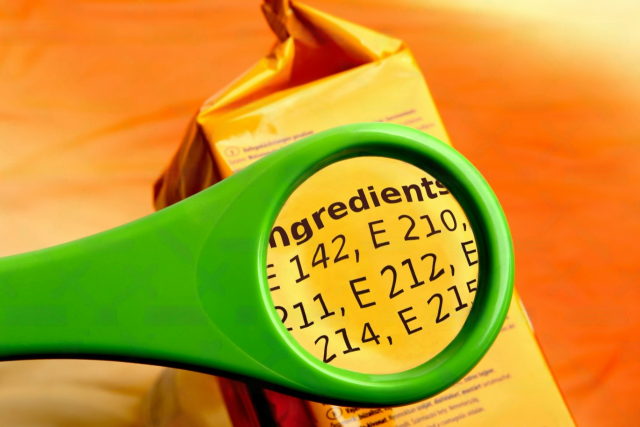Reading the ingredients label on a bag of dog food can be a daunting experience. Half of the ingredients don’t seem to be in any language spoken on Earth. And you wouldn’t be the first to think (*hint hint*) that they are made intentionally hard to find too! But we love those furballs. So we read them. Here’s how to approach it:
- First Ingredients Matter Most: Ingredients are listed by weight in descending order. This is because the food companies don’t have to accurately post their ingredients, or the nutritional composition of the food they sell. Just the weight and the general ingredients. The first few ingredients usually make up the bulk of the food, so they give you a good idea of the primary nutrients. Meat sources will be first on high-quality foods. If corn or wheat is listed first, well, then that’s most of what your dog will bea eating. Terms like “meat meal” or “animal by-product,” aren’t necessarily bad, but they may indicate lower-quality proteins and ingredients.
- Identify the Main Protein Source: High-quality dog foods will list a single source of meat (e.g., “chicken” or “beef”) as the first ingredient, rather than by-products or meals, which can be less nutritious. Some dog foods have several proteins listed first and this is great too! Don’t immediately dismiss the presence of ‘meat meals’ though, as whole meats contain more water weight. Meat meals can offer a higher protein content which, if combined with a high quality first ingredient, can mean that you are looking at a great dog food. Everything really depends on that first ingredient!
- Avoid Fillers and Unnecessary Additives: Ingredients like corn, wheat, and soy are often used as fillers and don’t provide as much nutritional value for dogs. You’ll also want to avoid artificial colors, flavors, and preservatives (such as BHA, BHT, and ethoxyquin), as these can be harsh on your dog’s system. Preservatives are much more rare than they used to be but keep an eye out for them.
- Check for Beneficial Ingredients: Look for named fruits, vegetables, and whole grains (if your dog isn’t grain-sensitive), as well as omega fatty acids (like flaxseed or fish oil), glucosamine, chondroitin, and probiotics, which support various aspects of health. A lot of vegetables that aren’t fit for grocery-store aisles are sent to these factories and then thrown into the kibble-making process. This isn’t necessarily a bad thing, as it adds naturally-sourced vitamins and minerals to the kibble.
- Guaranteed Analysis: This is a breakdown of the nutritional content, including crude protein, fat, fiber, and moisture. Compare this with your dog’s needs to ensure they’re getting balanced nutrition. For example, a dog’s diet should typically have at least 18-22% protein, depending on their age and activity level. Do not, however, rely on this to determine your dog food. Simply because a food guarantees a certain level of protein, fat, and carbohydrate percentage does not mean that these ingredients are good for your dog.
The trick is to try and do all of these steps at the same time. It is a difficult trick to master and has led me down some very frustrating aisles. When in doubt, look for ingredients you want, make sure that the first ingredient is a high-quality protein source, and stay away from soy and anything artificial. Or just download Feed Right and save yourself some time.

Leave a Reply